The Players Club opened a new course designed by Adrian Stiff in the spring of 2010. Before stepping on the first tee, the Stranahan Course intrigues due to its unusual name. Frank Stranahan was surely the greatest amateur in the world just after WWII until 1954. As the son of the founder of Champion Spark Plugs, Stranahan enjoyed an amateur career like few have before or since. Competing in over 200 events across three continents, Stranahan claimed two Amateur Championships, four Western and three North and South Amateur Championships. Proving he could compete with the pros, Stranahan finished runner up in both the Masters and the Open Championship of 1947. Stranahan also finished joint second behind Hogan’s legendary victory at the 1953 Open Championship at Carnoustie.
After losing to Arnold Palmer in the finals of the 1954 US Amateur, Stranahan turned professional. Often viewed as a controversial figure in golf, many link this decision to the USGA’s refusal to select Stranahan for the 1953 Walker Cup side. While not nearly as accomplished as in his amateur days, Stranahan did enjoy some success, most notably a win at the 1958 Los Angeles Open. In all, Stranahan claimed over 70 amateur titles, a handful or two professional victories and been the subject of countless stories, some true, some not.
The course honouring Mr Stranahan sits on approximately 72 acres and at less than 5600 yards is remarkably short for a modern design. I write modern design because that is what the Stranahan most decidely is. The fairway shaping and green contours are completely manufactured, but not to an unrecognizable degree. The course cannot be said to be out of step with many older designs because the land forms created are not dissimilar in shape or placement to elements often encountered on classic links. The three standout features of the Stranahan are its greens, mounding and bunkering. The putting surfaces are generally fairly small and are without exception full of interest and challenge. Many have gathering spots for relatively easy hole locations, but because of the contours and slopes, most greens have a few difficult spots which would likely prove to be confounding for many players.
The mounding too is slightly unusual in places especially considering this is the second course of the club and fairly cheap to play. While some of the mounding is to the rear of greens (some help to create a bowl effect for hole locations) and wings of fairways (I suspect to make the course more playable for beginners) and to lift fairways above surrounding land (likely for drainage purposes), there are some outrageous mounds front and centre which serve to create blindness or obscure views. It is these mounds which I applaud, especially given the modern mantra of doing whatever necessary to eliminate blindness.
Finally, the bunkering is light, yet judiciously placed. Some are hidden and spring a trap for the unsuspecting, yet this isn't done so often for one to expect trickery around every corner. Some are fully in view centreline bunkers. Very few if any of the bunkers are there for framing purposes. They nearly all guard a preferred line or act as a deterrent for playing too safely.
The course features seven short holes and consequently it is harder to score than the Stranahan yardage indicates. It is noteworthy that of these seven par 3s, four are less than 130 yards in length. That leaves plenty of scope to provide a handful of holes which will likely test fairway wood play. Not surprisingly, the opening hole is a par 3, the shortest of the lot at 105 yards and because the player is likely just out of the car with his boots freshly laced, this is perhaps Stranahan's most challenging short hole. Playing to a peninsula target, this can be a very intimidating shot. Thankfully several trees were recently removed, however, the hole could do with a complete clear-out to fully expose the green. Before & after.

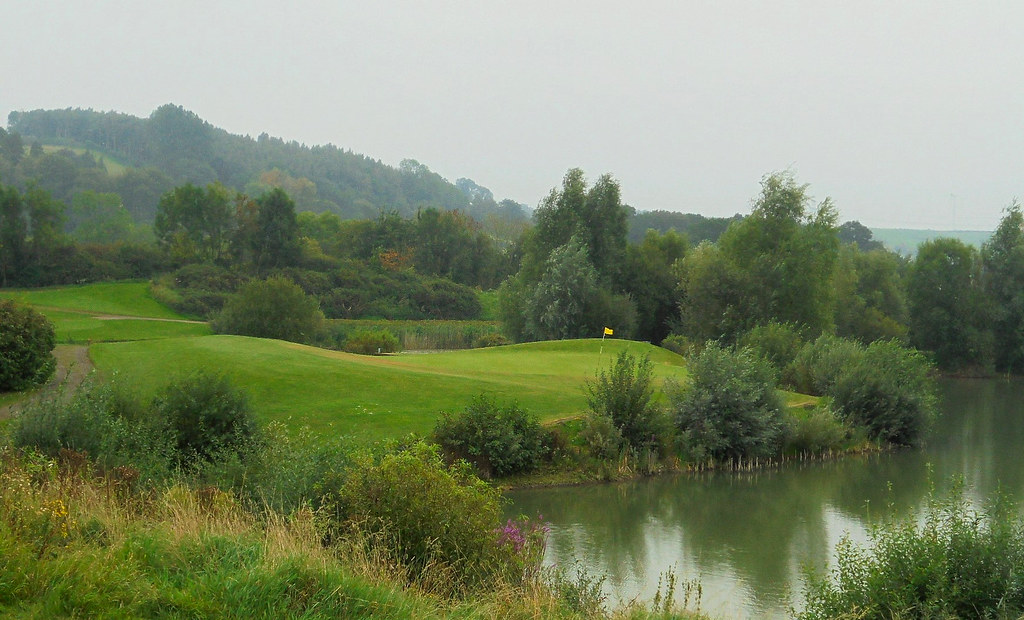
The second isn't much less intimidating. Dangling the idea of a drivable par 4 in front of the unsuspecting golfer, this hole is just darn right dangerous. Trouble lurks right, left and long. It is best to treat this as a classic target golf hole. Plop a 200 yard shot at the marker post and wedge one in.

Since my last visit some five years ago, foliage has been allowed to creep in. This is very evident left of the second where a bunker is half buried in foliage and in front of the 5th tee. A look at the green from the left.

Many greens are of the humpback type. Uphill to the middle section of the green then downhill to the rear. Although, the second green is an extreme example of the concept.

There is a blind safe area on the right side of the fairway (left in photo) which is welcome relief when balls disappear from sight off the tee.
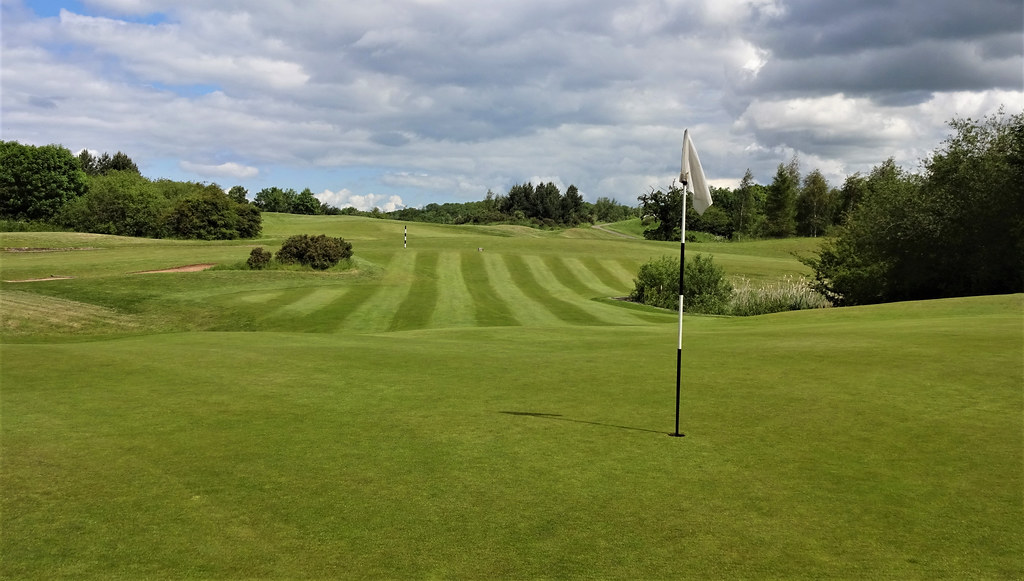
#3 is more of a conventional hole playing to what seems like one of the endless corners of the property and one likely to require two good blows. I get the impression large areas of The Stranahan were farmer fields divided by hedges, hence the many corners. I say the hole is conventional, but the elongated mound short right of the green is a beautiful touch. Unfortunately, deep rough has been allowed to grow on the mounding to the right.

The par 5 fourth turns back on the 3rd and plays deceptively long for its 490 yards. The 5th is a seemingly simple hole which is in fact quite clever. The fairway turns right over a dip. There is space (less space than 8 years ago!) to leak a shot a bit right, but a greenside bunker can guard against a right hole location. In truth, one will want to drive it a bit left (and there is oodles of space left), if the dip short of the rise can be carried. This leaves an approach looking down the gut of the green. If the dip isn't carried or if one doesn't drive it far enough up the centre, the view of the putting surface is compromised. I enjoy this sort of hole where subtlety still carries the day.
The par 3 sixth is one of the more bizarre I have come across. Its not bizarre because of anything outrageous, more because there is nothing to visually distinguish the hole. As is often the case with this sort of hole, dead ground is the main defence....well that and another thoughtful green. With the hole on the right it is easier to be aggressive due to the rear bank, but a hollow and a knob must be carried...as seen on the left of the photo.

An immediately appealing hole, the 7th is wide open, but a blind approach can be had from the left side of the fairway due to a large depression which must be carried for a full view of the green. Many archies would have bunkered the right corner or perhaps the left corner to help frame the hole, but I appreciate Stiff's simple and timeless strategy. Mimicing the drive, the approach also features a depression short of the green. Gauging this shot is difficult because of the false front and small plateau where the hole is located.
A long par three, the 8th features a large bank on the right which can act as a kick plate that allows one to avoid taking on the hedge down the left or the carry to the front of the green. This photo is from well in front of the tee.


The last hole on the front nine is a relatively simple up n' over par 4. A word about "making the turn". An often neglected aspect of short courses is the game is played so quickly there is no need for a halfway house or lavatory facilities. My partner and I meandered over the 18 holes in just about three hours.
Once crossing to the far side of the hedge, we now play four holes which may be the highlight of the course. On this play I must say there were elements about this section of the course which reminded me a lot of The Sacred Nine 4-6 sequence of holes in reverse. In the Stranahan case, it is three holes which sandwich a par 3 and cover in width across the fairways some 180 yards. There isn't quite enough room for three fairways, but I think it works as well as can be expected even if a bit dangerous. The entire section is sort of one huge humpback fairway with the 10th and 13th playing down the flanking low sides and the 12th on top. Wisely, the 10th tee has been raised so folks can see where they are going and avoid hitting into those playing down the 12th. As the hole plays along the hedge it is common to leak tee shots into the adjacent 12th fairway. As is almost always the case at Stranahan, there is plenty of space to play away from the hedge, but then you are greeted with an awkward approach. At the 10th there is some trouble up the safe right line with a blind bunker and a bit of rough. There used to be a front right greenside bunker, but now there is horrible claggy rough in that area. This is a very dubious feature which I dislike.


A closer look at a very interesting green.

Another look.
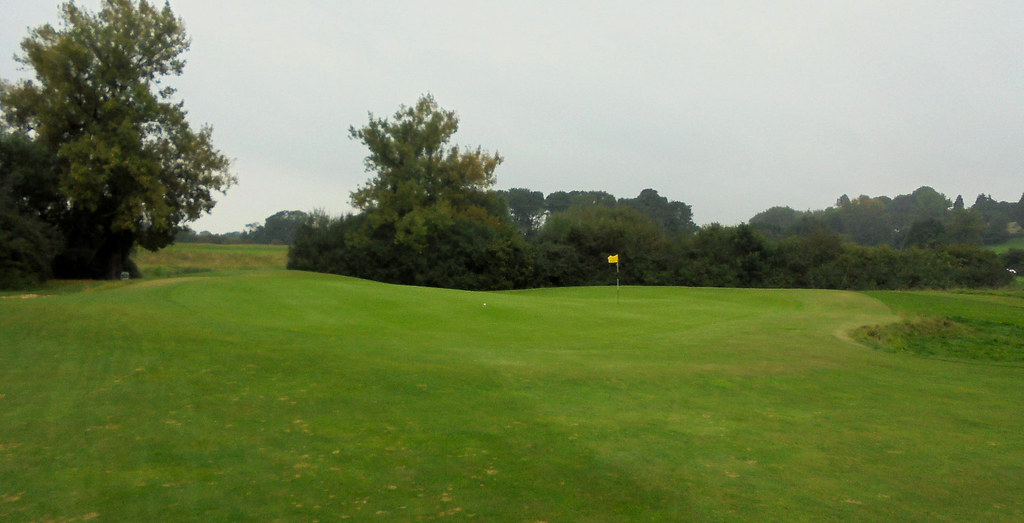
The 11th plays uphill over sleepers whose sand was removed. There is a back stop which makes accessing the rear shelf doable. For some reason the tee was moved around the corner making the hole about 20 yards longer. It's not worth the walk.

#12 may be the best hole on the course. A reachable par 5 featuring a large, hidden fairway bunker and a green whose left side slips into the built up bank on the left.

This bunker lurks in the second shot zone. It must be said the aesthetics of this bunker have been drastically improved while still essentially offering a flat bunker. I would like to see more of these feature bunkers scattered about the property.
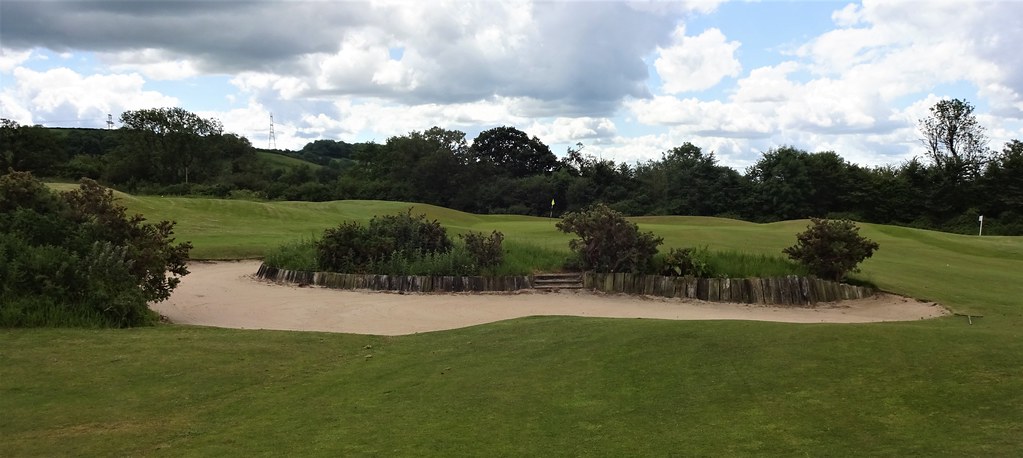
Before.
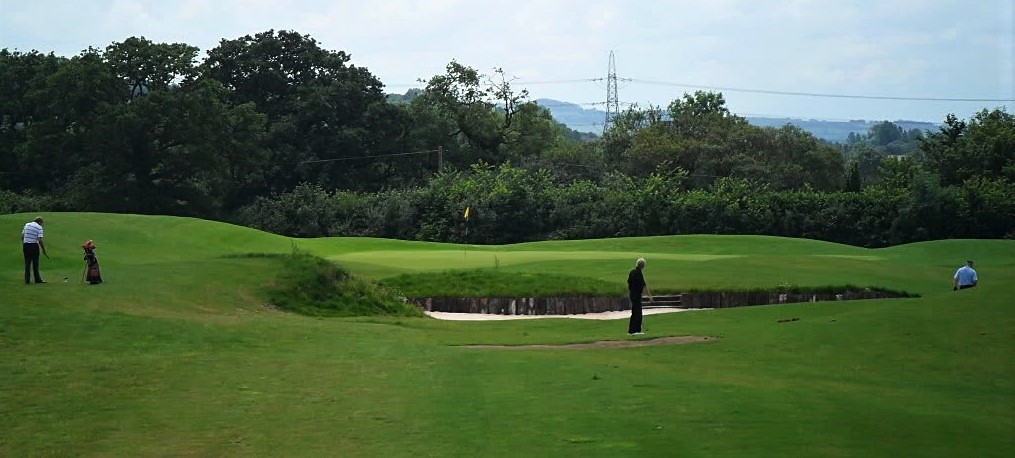
The green.

The thirteenth heads in the other direction and it too is a reachable long hole, but a hedge down the right may put people off from opening their shoulders. The green is another of the gathering type, but tricky hole locations are abundant.
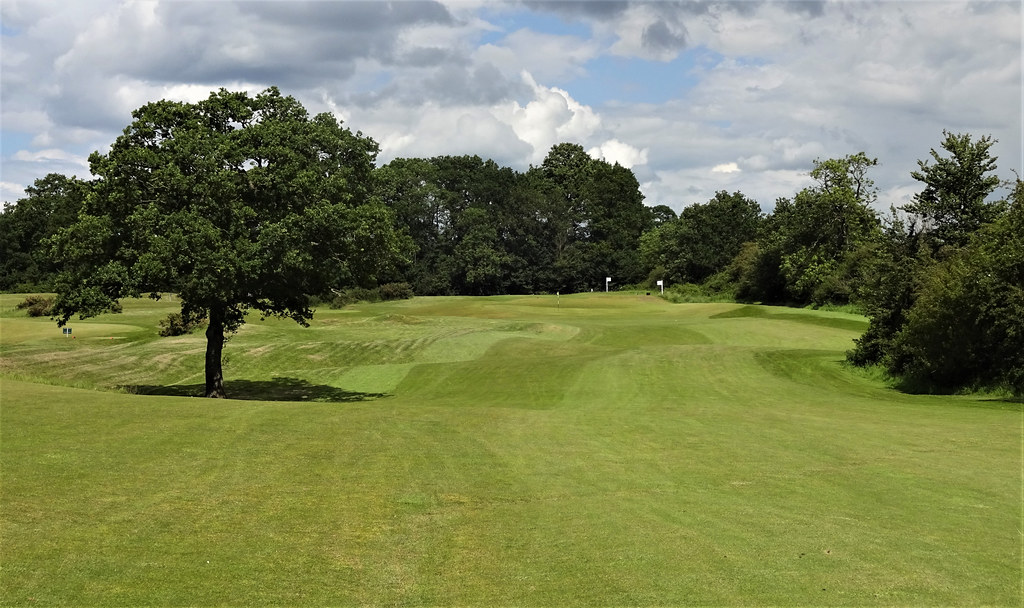


14-16 are holes which I really don't come to grips with as a group. There are plans to extend the 14th straight back through the trees and eliminate the current short 15th. A par three would then be built between 2 and 3. This new arrangement creates three par 5s in row! I think this will be an improvement.
The 17th gets back on track. The hole heads uphill and legs right. Its a bit naughty to have a fairway sloping blindly to a water hazard, but the fine approach and green make up for this shortcoming. The green is kidney shaped with a false front leading to a large depression on the right of the green.
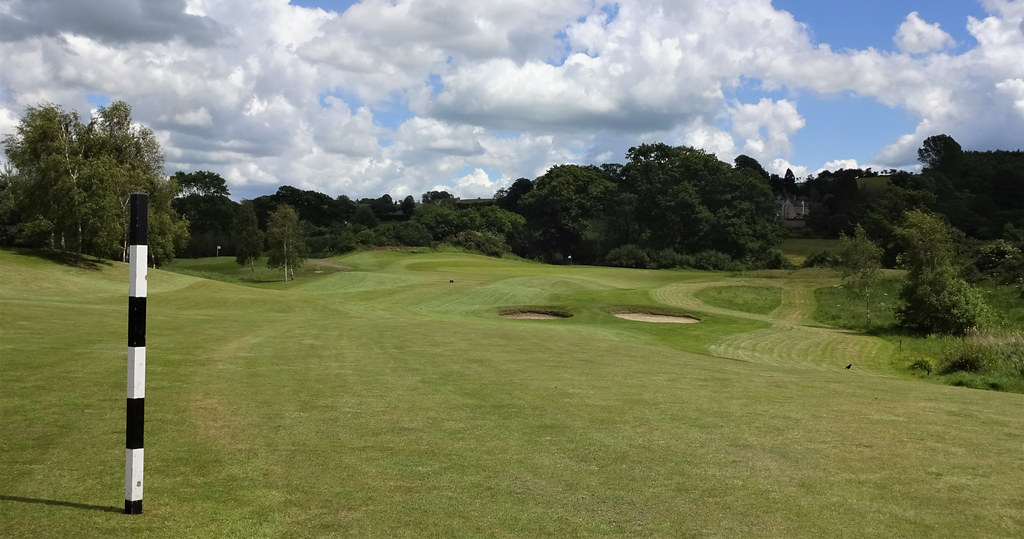
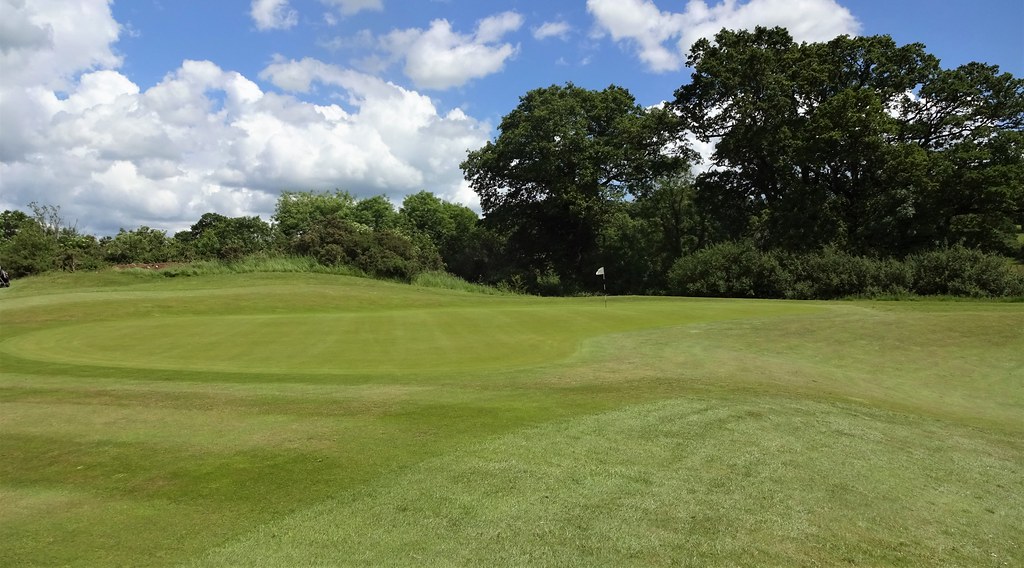
The round ends as it began, with an intimidating par 3. As is the case with most of the holes, the green is very interesting; a side by side two tier affair complimented with various knuckles and knobs. The marshy area in front of the green and water rear left has been removed.
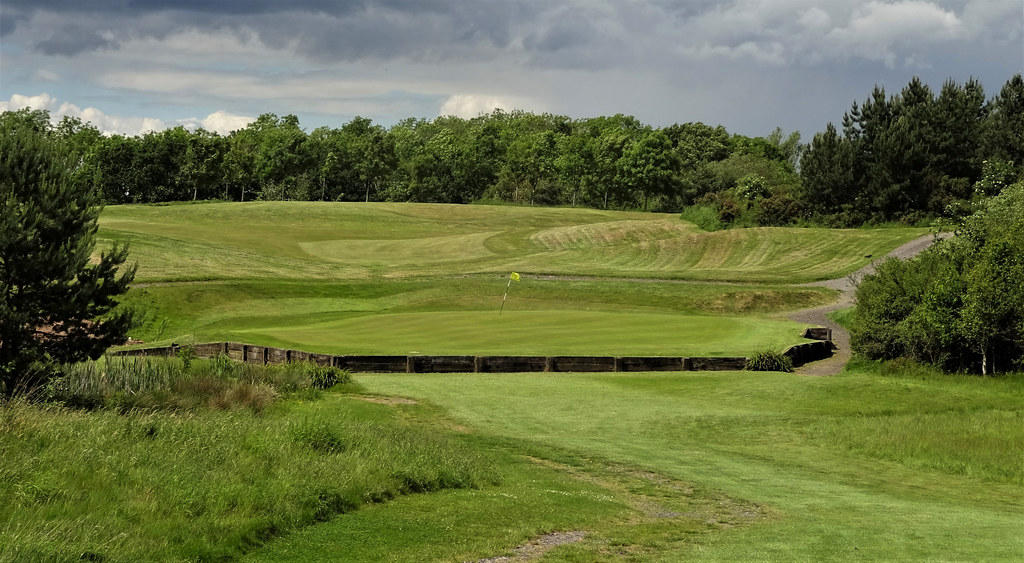
Rear of the green.
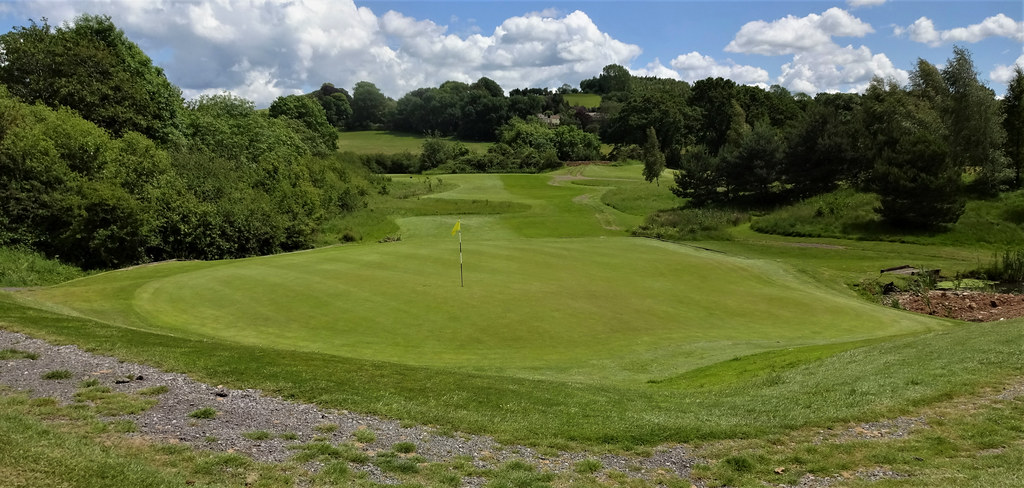
I think it rather obvious that I am impressed with the Stranahan Course. The greens alone are worth a visit and I think one of the best sets I have seen in England. Adrian Stiff tried to build as fun a course as he could given his limited 70ish acres and in the main I believe he was successful. I would like to see more feature bunkering and less rote mounding around the greens, but that is down to personal opinion. I have a lot of time for the Stranahan as it ticks an awful lot of boxes and at a price that can't be quibbled with. Mr Stiff created a design which is both bold and sensible, not unlike Lederach near Philadelphia, a course I greatly admire. The only serious issue I have is with the walk back to the house after the round. The 18th must be close to a half mile walk to the house. Be that as it may, anyone in the Bristol area looking for a game should include the Stranahan on their short list. The club has also added hotel rooms to the clubhouse which makes a stop-over to from London/Heathrow an attractive option. Finally, for those interested in golf history, the walls of the house are an explosion of golf memorabilia which is highly attractive and of great interest. The Stranahan definitely makes my Nifty 50. 2023
Ciao